Occupational Safety Training for Lubricating Oil Production
99,000 ₫
Note: The above price is calculated for one person, the price may fluctuate depending on the number of trainees participating in the course and the market movement. For more accurate price support, please refer to the price list or contact our consulting staff directly.
Occupational safety is an important issue in factory production lubricating oil and needs to be addressed promptly to ensure the health and safety of workers, enhancing the reputation of businesses. The Occupational Safety Training course is one of the effective solutions to raise awareness of how to prevent occupational accidents for workers participating in lubricating oil production.
Table of Contents
Toggle1. Overview of Lubricating Oil
a. What is Lubricating Oil?
- Lubricating oil is a type of petroleum oil produced from crude oil through special processing, giving it higher viscosity compared to regular crude oil. Lubricating oil is commonly used to lubricate machinery parts to reduce friction and wear, thereby increasing the lifespan and operational efficiency of those devices. Lubricating oil is also used in special applications such as in the production of plastics, rubber, and cosmetics.
- The lubricating oil industry in Vietnam is currently developing strongly, meeting the demands of various industries, transportation, and other sectors. Vietnam has large lubricating oil plants such as Cat Linh Lubricating Oil Plant, Dung Quat Lubricating Oil Plant, Nghi Son Lubricating Oil Plant… Additionally, many small and medium-sized enterprises are also active in this field.

b. Lubricating oil production machinery
The lubricating oil production process involves many steps and requires the use of various types of machinery and equipment. Below are some main machines used in the lubricating oil production process:
- Distillation equipment: Used to separate different components of crude oil through distillation.
- Mixing tanks: Used to mix different chemical components to create lubricating oil.
- Separation equipment: Used to separate lubricating oil from other crude oil components.
- Press machines: Used to press and purify lubricating oil.
- Viscosity analyzers: Used to measure the viscosity of lubricating oil to ensure final product quality.
- Filtration systems: Used to remove impurities and protect other equipment during production.
- Measurement and control systems: Used to monitor important technical parameters of the production process such as pressure, temperature, and flow.

c. Typical lubricating oil manufacturers
Some typical lubricating oil manufacturers in Vietnam are:
- Hai Phong Lubricating Oil Co., Ltd (HPC): HPC is one of the leading lubricating oil manufacturers in Vietnam, established in 1965. The company produces various types of lubricating oils, including engine oils, industrial oils, hydraulic oils, and truck oils.
- Nghi Son Lubricating Oil Co., Ltd (NSLUBE): NSLUBE is a new lubricating oil enterprise but quickly developed and became a strong competitor of HPC. The company produces premium lubricating oils for car engines, airplanes, ships, and other industrial equipment.
- Petrolimex Lubricating Oil Co., Ltd (PLX): PLX is a large state-owned enterprise with a solid reputation in Vietnam’s oil industry. The company produces and supplies many types of lubricating oils, including engine oils, industrial oils, hydraulic oils, and transmission oils.
- Dung Quat Refinery, located in Dung Quat Economic Zone, is Vietnam’s first oil refinery built in Binh Thuan and Binh Tri communes, Binh Son district, Quang Ngai province. Its products include engine oils, industrial oils, hydraulic oils, and transmission oils.
d. Specific jobs in a lubricating oil production plant
Group 1
- CEO, Deputy CEO, Department Heads in the lubricating oil production plant.
Group 2
- Safety officers: Manage safety in the plant, design safety procedures, supervise and ensure employees comply with safe working procedures.
Group 3
- Raw material preparation: This is the first step in lubricating oil production. Materials used include mineral oil, vegetable oil, base oil, and additives.
- Mixing: After preparing the raw materials, they are mixed to form the lubricating oil blend. Mixing is done in a continuous or batch mixing system.
- Distillation: After mixing, the oil blend is distilled to separate different components. This process is done by heating the blend in a distillation system.
- Filtration: After distillation, lubricating oil is filtered to remove impurities. Filtration can be done using different types of filters.
- Packing: After production, lubricating oil is packed into barrels, cans, or bottles for sale.
Group 4
- Office work, service, sales, marketing.
- Production management, quality management, human resources management, materials management, financial accounting management.
- Research and development of new products, packaging design.

2. Overview of Lubricating Oil Occupational Safety Training Course
In this article, we focus on issues related to Group 3, because Group 3 directly participates in production and is at the highest occupational safety risk. Refer to other groups here
a. What is Group 3 Occupational Safety Training?
- Group 3 Occupational Safety Training consists of sessions that equip workers with awareness on how to prevent occupational accidents.
- The safety training course helps workers recognize and avoid hazards, reducing the risks of accidents during work.
REGISTER FOR OCCUPATIONAL SAFETY TRAINING SERVICE
b. Training duration
Initial safety training
- Total training time is at least 24 hours, including exam time.
- 8 hours of theory on policies and occupational safety and hygiene laws
- 8 hours of theory on basic occupational safety and hygiene knowledge
- 4 hours of theory on specialized training content
- 2 hours of practical training on specialized content
- 2 hours of final theoretical exam
Safety training center will arrange sessions depending on employees’ schedules. Usually, there are 6 training sessions over 3 days, provided the company arranges continuous study time.
Periodic safety training
- Before the occupational safety card expires, workers who want to renew must attend periodic safety training, with training time of at least 50% of the initial training duration.
Explanation: total periodic safety training time is at least 12 hours, including exam time. After completing the course and passing the exam, the worker will be reissued or extended the occupational safety card.
c. Training course content
| No. | TRAINING CONTENT | TRAINING DURATION (HOURS) | |||
| Total | Including | ||||
| Theory | Practice | Exam | |||
| I | Policies and occupational safety and hygiene laws system | 8 | 8 | 0 | 0 |
| 1 | Overview of occupational safety and hygiene legal documents system. | 6 | 6 | ||
| 2 | Standards and technical regulations on occupational safety and hygiene. | 1 | 1 | ||
| 3 | Specific regulations from state management agencies on occupational safety and hygiene when constructing, expanding or renovating production facilities and managing machines, equipment, materials, and substances requiring strict safety and hygiene. | 1 | 1 | ||
| II | Basic knowledge on occupational safety and hygiene | 8 | 8 | 0 | 0 |
| 1 | Basic knowledge on hazardous and harmful factors at the workplace. | 4 | 4 | ||
| 2 | Methods to improve working conditions. | 1 | 1 | ||
| 3 | Safety culture in production and business. | 1 | 1 | ||
| 4 | Rights and obligations of employers and employees; safety policies for workers; roles of safety officers. | 1 | 1 | ||
| 5 | Safety rules, signs, using safety equipment and personal protective equipment; basic first aid, occupational disease prevention skills. | 1 | 1 | ||
| III | Specialized training content | 6 | 4 | 2 | 0 |
| Comprehensive knowledge about machines, equipment, substances generating hazardous factors; analysis, risk management, and safe working procedures for machines, equipment, and substances with strict safety and hygiene requirements. | 6 | 4 | 2 | ||
| IV | Final training exam | 2 | 2 | 0 | 0 |
| Total | 24 | 22 | 2 | ||
See more training content of the 6 groups
d. Occupational Safety Card
After completing the occupational safety training and passing the exam, workers will be issued a Group 3 Occupational Safety Card (commonly called Group 3 Safety Certificate).
The Group 3 safety card shows information such as full name, date of birth, job, and working environment. It also includes training duration, official stamp, and signature confirming course completion.
According to regulations in Clause 2 Article 24 of Decree 44/2016/ND-CP, there are 2 cases:
- If the employer and employee have a labor contract, the employer must sign, stamp, and validate the safety card for the Group 3 worker after completing training from a safety training provider and passing the exam.
- If the worker is freelance or seasonal, without a labor contract, the training unit must sign, stamp, and validate the safety card after completing training from the occupational safety training provider and passing the exam.

3. Identifying Hazards in Lubricating Oil Production
Some hazards in lubricating oil production include:
- Lubricating oil is flammable and can cause fires or explosions if not handled properly.
- During lubricating oil production, some toxic chemicals may be used, such as benzene, sulfur dioxide, hydrogen sulfide, phosgene, methanol, formaldehyde, and sulfuric acid.
- Machinery and equipment in a lubricating oil factory can generate noise that affects workers’ health.
- The production process may involve high-temperature materials and machinery, posing a burn risk to workers.
- The production process can generate dust that is hazardous to workers’ health.
- Using bare hands or unsafe materials may lead to collisions, abrasions, or cuts.
4. Common Occupational Accidents in Lubricating Oil Production
In lubricating oil factories, common occupational accidents include:
- Fire or explosion: Lubricating oil can ignite easily if not stored or used properly.
- Injuries from machinery: Machinery in lubricating oil factories can cause accidents if not operated or maintained correctly.
- Chemical reactions: Workers must handle toxic chemicals and products, posing risks of burns, skin reactions, or inhalation of toxic fumes.
- Collapse or impact: Oil containers or equipment may collapse or collide during transport or use, endangering workers’ health and safety.
- Other occupational accidents: Slip, trip, or fall accidents may occur when moving around the factory floor.
5. Safety Measures in Lubricating Oil Production
Safety measures in lubricating oil production include:
- Employees must be provided with full personal protective equipment, including helmets, safety glasses, protective clothing, gloves, safety shoes, and masks to safeguard their health.
- Lubricating oil factories must have safe working procedures and train employees accordingly. Full compliance with labor safety, environmental protection, and fire prevention regulations is required.
- Production equipment must be regularly inspected and maintained to ensure safety during operation.
- Material and chemical management systems must be in place to ensure safe handling of chemicals.
- Employees must be trained in occupational safety, proper use of personal protective equipment, and safe work procedures.
- Waste generated during production must be treated properly to prevent environmental impact.
- Factories must perform quality checks to ensure product safety and compliance with standards.
- Periodic workplace environment monitoring should be conducted to identify and reduce harmful factors, preventing occupational diseases.

6. Benefits of Lubricating Oil Production Safety Training
An Toan Nam Viet provides businesses with the following benefits upon completing occupational safety training under Decree 44/2016/NĐ-CP on Occupational Safety and Hygiene:
- Workers can identify potential occupational hazards and take preventive measures to avoid accidents.
- Businesses can implement risk prevention measures in production, operation, and maintenance processes.
- Costs associated with workplace safety incidents can be minimized.
- Uninterrupted production improves labor productivity and product quality.
- Compliance with labor safety laws minimizes legal risks.
- Enhances credibility and professionalism, elevating the company’s brand.
Nam Viet’s training programs help individuals prevent hazards that may cause injuries or even fatalities.
REGISTER FOR OCCUPATIONAL SAFETY TRAINING SERVICE
7. Customer Feedback After Lubricating Oil Production Safety Training
An Toan Nam Viet has years of experience partnering with businesses nationwide, especially in southern provinces. This responsibility is highly valued, which is why Nam Viet continuously professionalizes its Occupational Safety Training. Positive feedback and suggestions from clients have driven our growth. Below are testimonials from partners we have served.
Hoa Dat Construction and Trading Joint Stock Company
“Nam Viet’s service greatly simplified occupational safety and helped us complete safety documentation for work. The consulting team answered our questions promptly and thoroughly. Five stars for Nam Viet.”
See more customer interviews after using the service from An Toan Nam Viet
8. Occupational Safety Training Capability of An Toan Nam Viet
An Toan Nam Viet is a reputable and quality occupational safety training center in Vietnam. Training sessions are conducted continuously at factories, manufacturing facilities, and construction sites nationwide (all 63 provinces).
REGISTER FOR OCCUPATIONAL SAFETY TRAINING SERVICE
Occupational Safety Training License
- An Toan Nam Viet has been inspected and certified by the Department of Safety of the Ministry of Labor – Invalids and Social Affairs, confirming the qualification for occupational safety and hygiene training. This strengthens our capability in occupational safety training.

Training Materials
- Before being used in ATLĐ courses, training materials are reviewed to ensure content accuracy and applicability.
- Instructors follow standardized teaching methods of An Toan Nam Viet, developed by occupational safety experts to maximize learners’ knowledge retention.
Facilities
- Controlling classroom conditions enhances teaching efficiency and knowledge absorption.
- Our training facilities offer spacious classrooms meeting standards for area, lighting, and training equipment, etc.
9. National Reputable Safety Training Center
At An Toan Nam Viet, we prioritize professional occupational safety training. Teaching workers self-protection skills contributes to building the country.
To ensure effective training, we meticulously prepare all tools, teaching aids, curriculum, materials, audio, and lighting.
Our instructors are experts with years of experience, some with research on hazard identification across industries and prevention methods.
Instructors deliver lessons practically, engagingly, and clearly, enabling learners to absorb knowledge effectively. Content always aligns with Decree 44/2016/NĐ-CP.
Learners understand multiple hazard prevention measures and how to protect themselves, applying these appropriately at work.
Our training center proudly offers reputable, professional occupational safety training with the following advantages:
- Competitive training fees without compromising quality.
- Flexible training schedules tailored to company operations.
- Quick and legal documentation for certification.
- Experienced instructors with long-term expertise.
- Classrooms controlled for optimal training efficiency and knowledge absorption.
- Lessons tailored to occupational safety in enterprises.
- An Toan Nam Viet provides accurate and professional customer support.

10. Additional References for Lubricating Oil Production Safety Training
- Lubricating Oil Production Occupational Safety Materials
- Occupational Safety Training Materials
- Occupational Safety Training Test Set
- Lubricating Oil Production Safety Quiz
- Lubricating Oil Production Occupational Safety Training Slides
1 review for Occupational Safety Training for Lubricating Oil Production
No comments yet

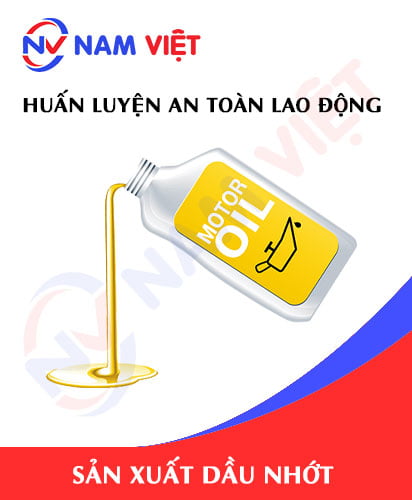
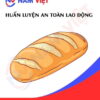
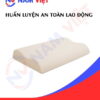






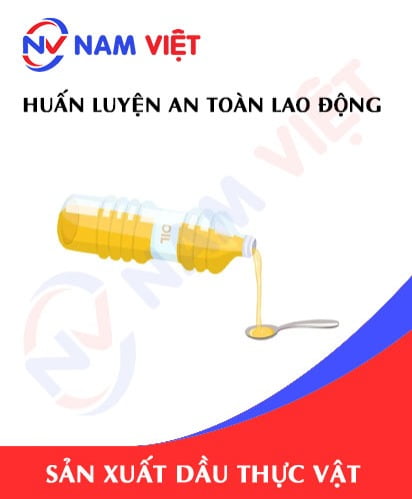

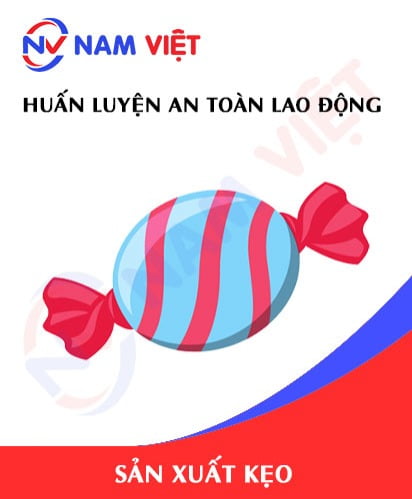


namchinh.haiphong341
Dịch vụ lắm nhé! tôi rất hài lòng với cách làm việc của trung tâm